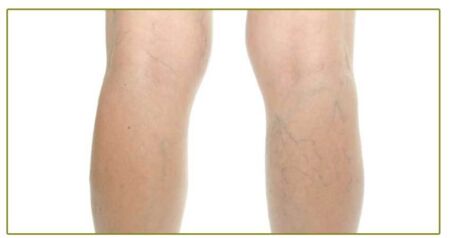
If chronic venous disease is left untreated, it can progress to a more serious form of venous disease. Signs and symptoms of chronic vein disease worsen over time, including pain, swelling, cramping, restlessness and fatigue of the legs, as well as, skin damage and ulcers in more severe cases. Those with the disease may experience symptoms that make walking and everyday tasks painful and difficult.
Symptoms of chronic venous disease are highly variable. Patients report a spectrum of symptoms. Most individuals affected have obvious clinical signs that include spider veins, varicose veins, lower extremity edema, skin discoloration and/or ulcerations. Current estimates show that approximately 70% of leg ulcers in the United States are venous ulcers or of mixed-arterial/ venous etiology.
However, some patients may have NO clinical signs of chronic venous disease but have symptoms ONLY which include tired, heavy, throbbing legs and/ or restless leg, nocturnal cramping or a burning sensation in the extremities. The pain is typically exacerbated by standing, is progressive throughout the day, is typically felt in the muscles in the calf or thigh, and is made better with walking and limb elevation.
As varicose veins are often misunderstood as a cosmetic problem, many people living with them do not seek treatment. The good news is that there are minimally-invasive treatment options available for varicose veins and chronic venous disease that are covered by many insurance plans. These treatments address the condition before it progresses further, allowing for a short, comfortable recovery and a quick return to everyday activities.
STATISTICS
Ten times more people suffer from venous insufficiency than peripheral artery disease in the United States. It affects all age groups.
More than 24 million Americans have varicose veins and 6 million have skin changes associated with Chronic Venous Insufficiency.
Blood clots form in the leg veins of over 2.5 million Americans each year.
10-35% of adults have leg veins that do not work properly.
Half a million Americans have ulcers on their legs caused by diseased veins.
BENEFITS OF VEIN ABLATION TREATMENT
Each treatment takes less than an hour.
Immediate return to normal activity is common with only minor soreness or bruising, which can be treated with over-the-counter pain relievers.
There are no scars or sutures because the procedure is minimally invasive.
Success rate is high and recurrence rate is low compared to surgery.
The success rate for thermal vein ablation is as high as 98%.
There is no need for general or spinal anesthesia.
Treatments are considered a medical necessity by most insurance carriers.
We’re proud that our patient satisfaction rate regularly exceeds 95% and we hope you’ll refer friends and family. Visit our website and learn more about how we bring relief to people suffering from the pain and discomfort of venous insufficiency. www.centerforvein.com